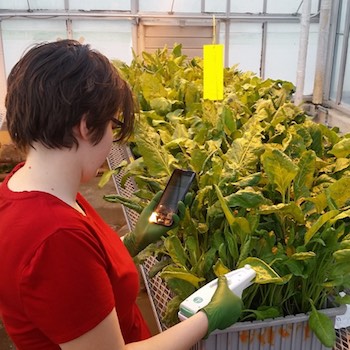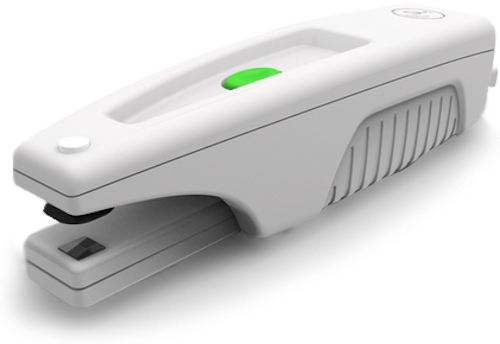PhotosynQ
Most plant research happens in highly controlled lab conditions. Unfortunately, the plants that human beings care most about grow outside where weather, bugs, and animals all impact their growth and health. Developed in the lab of David Kramer, PhotosynQ is a platform for measuring plant health at a fundamental level in the field, where it matters most, and collecting that data across the world to create a global, open access dataset of plant health and physiological activity.
 How it works
How it works
- Create project: Choose a measurement protocol and add custom survey style questions on the PhotosynQ website;
- Collect data: Data is collected with the MultispeQ, a sophisticated and inexpensive hand-held photosynthesis meter connected to the PhotosynQ mobile app;
- Upload to website: Upload crop physiological data and key metadata to the PhotosynQ website;
- Analyze data: Visualize and map data, aggregate results, apply sophisticated analytical tools using the PhotosynQ web app, and analyze data with 1 to 1000 collaborators worldwide.
In the last few years, collaborators from more than 15 countries have collected hundreds of thousands of measurements on a diverse range of plant breeding, agronomic and plant physiology projects. Here are a couple examples:
- On-station evaluation of Long duration pigeonpea
- Michigan State University - Wheat Performance Trials
 MultispeQ features
MultispeQ features
The MultispeQ device is capable of collecting many plant physiological and environmental parameters including:
- Fluorescence-based parameters like qL, qP, ΦII, LEF, NPQ;
- Absorbance-based parameters like vH+, gH+, ECSt and relative chlorophyll content;
- Environmental parameters like temperature, relative humidity, barometric pressure, leaf temperature, light intensity, cardinal direction and tilt.
For more information about these parameters and the instrument check out our publication in Royal Society Open Science.
Campus Contacts
Atsuko Kanazawa
kanazawa@msu.edu
(517) 352-2779
Sebastian Kuhlgert
kuhlgert@msu.edu